
Beginner's Guide to Japanese Particles: Learn the Basics
Share
TL;DR:
- Japanese particles are crucial for structuring sentences, acting like conjunctions or prepositions in English.
- 'は' (wa) identifies the main subject, while 'が' (ga) emphasizes specific subjects;
- ‘も’ (mo) includes the subject to what was previously said
- 'に' (ni) indicates direction, purpose, time, or location;
- 'へ' (e) shows direction;
- 'で' (de) marks location or means of action;
- 'を' (wo) identifies the direct object;
- 'の' (no) shows possession;
- 'と' (to) and 'や' (ya) link items;
- 'か' (ka) turns statements into questions;
- Sentence-ending particles like 'ね' (ne) and 'よ' (yo) add tone.
- Memorize key particles, practice listening with media, and use resources like apps, AI, or other online tools.
- Mastery of particles enhances Japanese sentence clarity and fluency.
Understanding Japanese particles is crucial for building coherent sentences. These tiny words connect ideas, clarify meaning, and establish context akin to English prepositions. Japanese learners can significantly improve their comprehension and communication skills by mastering particles like は, が, and に.
In this article, we’ll introduce the most common particles in Japanese and aim to make the explanations practical and clear while keeping them succinct. Bear with us, as particles are not an easy topic and some have overlapping nuances, which can make choosing the right one a headache, even for advanced learners.
What are Japanese particles, and why are they important?
Japanese particles are essential function words in sentences, similar to prepositions and conjunctions in English. They provide context and define grammatical relationships without changing form. Particles mark subjects, objects, and more, affecting sentence meaning. For example, は (wa) identifies the subject, while が (ga) adds emphasis. Understanding these roles is vital for grasping Japanese sentence structure. By mastering particles, you will enhance your comprehension and expression in Japanese communication effectively.
Section 1: 13 Common Particles
How do the particles "wa" and "ga" function in Japanese sentences?
The particle は (always read “wa” and not “ha”) identifies the main subject in Japanese sentences, used to present or describe the subject of discussion. In contrast, が (ga) emphasizes specific subjects within a sentence, highlighting who or what performed an action. For instance:
- 猫は可愛い (neko wa kawaii) means "the cat is cute," focusing on the description,
- while 猫が出てきた (neko ga dete kita) means "a cat came out," emphasizing the emergence of the cat.
Each particle improves sentence clarity.
The role of the particle “mo” in Japanese
も (mo) is a particle that basically translates as “too” or “neither”. It usually replaces は or が in the sentence. It shows that the subject placed before も is also included in what was previously said. 私も行く (watashi mo iku), “I go too” (literally, but a closer translation would be “I’ll join” or “I’ll come along”).
What is the role of the particle "ni" in Japanese?
The particle に (ni) is a complex but very common particle that can be used in a wide range of situations:
- It indicates destination or purpose within a sentence. It functions like “to” in English for destinations, as in 学校に行く (gakkou ni iku), meaning “I go to school.” (destination), or 買い物に行く(kaimono ni iku) “I go for shopping” (purpose).
- For time expressions, it marks when an action occurs, similar to “at” or “on”, such as 三時に会いましょう (sanji ni aimashou), meaning “let's meet at three”. Using に in precise contexts ensures accuracy in sentence meaning.
- It is used to mark location, as in 東京に住んでいる (toukyou ni sunde iru), “I live in Tokyo” when simply meaning that something exists somewhere.
How do you use the particle "e" in directional expressions?
The particle へ (he, pronounced e) indicates a destination or a direction in Japanese, similar to “to” in English. It implies direction towards a place without specifying arrival. It is sometimes interchangeable with に as they can both indicate destination, which can make it confusing for learners:
- フランスへ行く (furansu e iku): I go to France
- フランスに行く (furansu ni iku): I go to France
The subtle difference is that に pinpoints a destination, while へ indicates a direction (which can also be the destination). へ is often considered slightly more polite.
How is the particle "de" used in Japanese?
The particle で (de) indicates location or means, showing where an action occurs or how it happens. For instance:
- 図書館で本を読みます (toshokan de hon o yomimasu) means "I read a book at the library," marking location,
- while ペンで書きます (pen de kakimasu) means "I write with a pen," specifying the method.
It differs from に as で indicates the place where an action is taking place, while に indicates the place where something exists.
How can you master the direct object particle "wo"?
The particle を (wo, pronounced o) is one of the easiest particles to assimilate. を marks direct objects in Japanese sentences, identifying the noun directly affected by the verb. For instance, りんごを食べます (ringo wo tabemasu) “I eat an apple” shows りんご (apple) as the direct object. To master を, focus on simple verb-object sentences.
How do possessive particles like "no" function in Japanese?
The particle の (no) shows possession in Japanese, connecting two nouns in a sentence. For example, 猫のしっぽ (neko no shippo) means “the cat's tail”, with 猫 (neko) as the possessor and しっぽ as the possessed. This structure resembles the English possessive form with “'s” or “of”. While の doesn’t always indicate clear ownership, it at least indicates a close relation between nouns, grouping words together: 日本の思い出 (nihon no omoide), “memories of Japan”.
“to” and “ya” for combining elements
と (to) and や (ya) are both similar to “and” in English. The difference being that と is used when listing a complete list of elements, while や lists items but implies additional unspecified elements.
- りんごとバナナを買いました (ringo to banana wo kaimashita) “I bought an apple and a banana” (and nothing else).
- りんごやバナナを買いました (ringo ya banana wo kaimashita) “I bought an apple and a banana” (and other things).
How does understanding particle "ka" change sentence meanings?
The particle か (ka) turns statements into questions. か is typically placed at the end of the sentence. This transformation is essential in dialogues, with 元気ですか (genki desu ka) asking "Are you fine?" while 元気です (genki desu) replies “I’m fine”. Understanding か helps distinguish questioning tones from statements, crucial for clarity in communication.
What are Japanese sentence-ending particles, and how are they used?
Japanese sentence-ending particles add context, tone, or emphasis without altering sentence structure. The two most common are ね (ne) and よ (yo). ね seeks agreement, akin to saying “right?” in English, while よ adds emphasis, similar to “you know?”. Sentence-ending particles are extremely common in Japanese and are considered part of the grammar (unlike English’s “you know?”). At first, the nuances they bring might be hard to catch, but by practicing you will come to understand and use them naturally.
Section 2: Going Further With Particles
Advanced particle structures for complex sentences
If you thought this was too simple, don’t worry, there is more. Advanced particle structures like double particles combine two particles to create specific meanings and add nuance to Japanese sentences. For example, では combines で and は to highlight a location as the topic of discussion. There are a lot of possible combinations, but you will study those later down the line. When starting to learn Japanese, you should focus on mastering common single particles.
Tips for learning Japanese particles effectively
1. Memorize key particles
Think of particles as pieces of a puzzle:
- は, が, and も are essential for forming basic sentences and describing things around you.
- を and の will help you add more information into your sentences.
- に, へ, and で will allow you to express more complex ideas beyond descriptions.
- と and や will enable you to construct longer sentences involving several items.
- か is key for forming questions.
- Sentence-ending particles like よ and ね will help you sound more natural in conversation.
2. Practice and exposure
To internalize particles, you need to practice regularly and expose yourself to natural Japanese:
- Listen to anime, dramas, or other Japanese media and pay attention to how particles are used.
- Use AI tools or apps to practice speaking (for example, you can use the free version of ChatGPT).
- Bunpro is an excellent tool that will teach you grammar including particles and use a spaced repetition system to make you remember everything you’ve learned.
3. Avoid Common Mistakes
Be aware of typical mistakes, such as confusing は and が, or when to use に, へ, and で.
What are common mistakes when learning Japanese particles?
1. Omitting particles
One of the first mistakes is omitting particles. They give meaning to the sentence and define the role of each word in the sentence. Even though native speakers sometimes drop particles in casual speech, it’s important for learners to practice using them consistently.
2. Confusing similar particles
- Learners often confuse は and が, leading to incorrect emphasis.
- Mixing up に and で regarding location:
- Here’s a little quiz for you. To say “I live in Tokyo”, would you say 東京で住んでいる (toukyou de sundeiru) or 東京に住んでいる (toukyou ni sundeiru)?). The answer is に.
- And be careful of how you use the particles と and や.
- First of all, it’s easy to make the mistake of using と when you should be using や. Use と for listing specific items and や for general or incomplete lists.
- Secondly, these particles are used for nouns, not actions. While English uses “and” for connecting actions too, Japanese uses several different grammatical structures depending on the context.
How does particle usage enhance overall Japanese fluency?
Particles form the backbone of Japanese sentences. They clarify grammatical roles and relationships, enabling precise communication and improving conversational flow. By mastering particles, you can:
- Understand sentence structure more clearly.
- Avoid misunderstandings in conversations.
- Sound more natural by using sentence-ending particles appropriately.
At an advanced level, you may even omit particles in casual speech to sound more fluent. However, this requires a solid understanding of their proper usage first.
How many particles are there?
The Japanese Wikipedia page for particles lists around 80 particles for colloquial Japanese, divided into seven categories:
- Case-making particles mainly attached to nouns to define their role in the sentence (e.g. が, の, を, に)
- Parallel markers, used to put things side by side (e.g. と, や)
- Adverbial particles that turn attached words into an adverbial expression (e.g. ばかり, など, くらい, ほど)
- Binding particles, that add meaning to the word it is attached to and emphasizes it (e.g. は, も, こそ)
- Conjunction particles, that connect sentences by expressing the semantic relationship between them (e.g. ば, から, ながら)
- Sentence-ending particles, added to the end of a sentence or phrase to add tone or meaning (e.g. か, よ, ね)
- Interjectory particles, used at the end of a sentence to adjust the tone or add meaning such as emotion (e.g. さ, よ)
Other sources list up to 188 particles, though many of these are variations of the same particle used in different contexts.
The exact number depends on factors such as whether outdated or rarely used particles are included, or if the list differentiates between colloquial and literary Japanese.
The exact number depends will largely depend on what is included in “particles”: whether outdated or rarely used particles are included, colloquial or literal Japanese, or whether you’re listing variations of the same particle.
Conclusion: FAQ
How many Japanese particles are essential for beginners?
Start with learning about the 13 key particles. These include は, が, も に,へ, で, を,の, と, や, か, ね, and よ. Understanding these helps in forming basic sentences and aids in early communication.
What are the different uses of に and で?
に indicates direction, purpose, time, or existence at a location. で marks the location of an action, or means.
How to choose between particles を and は?
を marks the direct object of a verb. は emphasizes or contrasts the subject. Use を for actions directly affecting something. Use は for stating something generally or focusing on a topic.
Where can I find resources to practice particles?
Look for resources like Japanese particles PDFs, cheat sheets, or worksheets online. They offer structured practice. Apps like Duolingo and websites like Bunpro also provide interactive particle exercises.
Related Posts
-
![この・その・あの・どの – Using ‘This / That / Which’ with Nouns in Japanese [JLPT N5]](//hirakan.com/cdn/shop/articles/acd351ada3fe4b04ae86de788a3350b8.jpg?v=1766305268&width=170)
この・その・あの・どの – Using ‘This / That / Which’ with Nouns in Japanese [JLPT N5]
Quick Summary Meaning: この (kono), その (sono), あの (ano), どの (dono) mean “this / that / which” when they come dire...
-
![これ・それ・あれ・どれ – Saying ‘This / That / Which One’ in Japanese [JLPT N5]](//hirakan.com/cdn/shop/articles/this-that.jpg?v=1766305107&width=170)
これ・それ・あれ・どれ – Saying ‘This / That / Which One’ in Japanese [JLPT N5]
Quick Summary Meaning: これ (kore), それ (sore), あれ (are), and どれ (dore) all mean “this / that / which (one)” when you ar...
-
![か~か – Expressing Choices like “A or B” in Japanese [JLPT N5]](//hirakan.com/cdn/shop/articles/choices.jpg?v=1766304827&width=170)
か~か – Expressing Choices like “A or B” in Japanese [JLPT N5]
Quick Summary Meaning: The pattern か~か shows a simple choice: “A or B.” How to Use: Put か after each optio...
-
![~から~まで – Saying “From A to B” in Japanese [JLPT N5]](//hirakan.com/cdn/shop/articles/from-AtoB.jpg?v=1765093560&width=170)
~から~まで – Saying “From A to B” in Japanese [JLPT N5]
Quick Summary Meaning: ~から~まで shows the starting point and ending point of something: “from A to B.” It is ofte...
-
![まで – Expressing “Until” and “Up To” in Japanese [JLPT N5]](//hirakan.com/cdn/shop/articles/until-up-to.jpg?v=1765093405&width=170)
まで – Expressing “Until” and “Up To” in Japanese [JLPT N5]
Quick Summary Meaning: まで (made) means “until” or “up to” and shows a limit of time, place, number, or even act...
-
![から – Expressing “Because” and “From/Since” in Japanese [JLPT N5]](//hirakan.com/cdn/shop/articles/because-from_since.jpg?v=1765093285&width=170)
から – Expressing “Because” and “From/Since” in Japanese [JLPT N5]
Quick Summary Meaning: から shows a reason (“because”) or a starting point (“from / since”). How to Use: Put...
-
![や – Listing Examples with “And, Among Others” in Japanese [JLPT N5]](//hirakan.com/cdn/shop/articles/and.jpg?v=1765093138&width=170)
や – Listing Examples with “And, Among Others” in Japanese [JLPT N5]
Quick Summary Meaning: や connects two or more nouns and means “and” or “among other things.” It shows that your lis...
-
![か – Forming Questions and Saying “Or” in Japanese [JLPT N5]](//hirakan.com/cdn/shop/articles/ka-questions.jpg?v=1763787134&width=170)
か – Forming Questions and Saying “Or” in Japanese [JLPT N5]
Quick Summary Meaning: The particle か turns a sentence into a question, or can mean “or” when choosing between thin...
-
![も – Saying “Also” and “Too” in Japanese [JLPT N5]](//hirakan.com/cdn/shop/articles/mo-also-too_99f908e6-78d0-4f82-8319-391ef42764bc.jpg?v=1763787251&width=170)
も – Saying “Also” and “Too” in Japanese [JLPT N5]
Quick Summary Meaning: The particle も means “also,” “too,” or “even.” It shows that something is the same as someth...
-
![と – Linking 'And', 'With', and Quotations in Japanese [JLPT N5]](//hirakan.com/cdn/shop/articles/to-and-with-quotation.jpg?v=1763265110&width=170)
と – Linking 'And', 'With', and Quotations in Japanese [JLPT N5]
Quick Summary Meaning: と links things like “A and B,” marks doing something with someone, and shows a quotation (“…,”...
-
![で – Marking Where and How an Action Happens in Japanese [JLPT N5]](//hirakan.com/cdn/shop/articles/de-where-how-action-happens.jpg?v=1763264973&width=170)
で – Marking Where and How an Action Happens in Japanese [JLPT N5]
Quick Summary Meaning: で marks the location where an action happens or the means/tool/method used to do something...
-
![へ – Marking Direction ‘Toward’ in Japanese [JLPT N5]](//hirakan.com/cdn/shop/articles/he-marking-direction.jpg?v=1762667986&width=170)
へ – Marking Direction ‘Toward’ in Japanese [JLPT N5]
Quick Summary Meaning: The particle へ marks direction or “toward” a place or person. It points where something is hea...
-
![に – Marking Time, Destinations, and Recipients in Japanese [JLPT N5]](//hirakan.com/cdn/shop/articles/ni-marking-destination.jpg?v=1762667846&width=170)
に – Marking Time, Destinations, and Recipients in Japanese [JLPT N5]
Quick Summary Meaning: The particle に marks a point in time (at/on), a destination you reach (to/into), or a target/r...
-
![の – Possession and Noun Linking in Japanese [JLPT N5]](//hirakan.com/cdn/shop/articles/no-possession-and-noun-linking.jpg?v=1761961297&width=170)
の – Possession and Noun Linking in Japanese [JLPT N5]
Quick Summary Meaning: Links two nouns to show possession, belonging, or description. Often reads as “’s” or “of....
-
![を – Marking the Direct Object in Japanese [JLPT N5]](//hirakan.com/cdn/shop/articles/o-direct-object.jpg?v=1761960990&width=170)
を – Marking the Direct Object in Japanese [JLPT N5]
Quick Summary Meaning: を marks the direct object — the thing that receives the action of a verb. It’s pronounced ...
-
![が – Marking the Subject ('Who/What') in Japanese [JLPT N5]](//hirakan.com/cdn/shop/articles/ga-subject-marker_60f30f70-6ca5-47ee-9a00-3646195d7d3c.jpg?v=1761386355&width=170)
が – Marking the Subject ('Who/What') in Japanese [JLPT N5]
Quick Summary Meaning: The particle が marks the subject of a sentence and highlights new or focused information (an...
-
![は (wa) – Topic Marker and Contrast in Japanese [JLPT N5]](//hirakan.com/cdn/shop/articles/wa-topic-marker.jpg?v=1761385996&width=170)
は (wa) – Topic Marker and Contrast in Japanese [JLPT N5]
Quick Summary Meaning: Marks the topic of the sentence — what you’re talking about. Often feels like “as for...” in E...
-
![じゃない・ではありません – Expressing 'Is/Was Not' in Japanese [JLPT N5]](//hirakan.com/cdn/shop/articles/janai-dehaarimasen_2594963b-531e-4f4d-a9b0-361010e0a720.jpg?v=1760865884&width=170)
じゃない・ではありません – Expressing 'Is/Was Not' in Japanese [JLPT N5]
Quick Summary Meaning: The negative of the copula “to be.” Say “is not” or “was not” with nouns and na-adjectives. Ho...
-
![だ・です/だった・でした – Saying ‘to be’ in Japanese [JLPT N5]](//hirakan.com/cdn/shop/articles/da-desu-datta-deshita_58bbc732-53fd-48da-83c7-4e477e7cc0b2.jpg?v=1760864506&width=170)
だ・です/だった・でした – Saying ‘to be’ in Japanese [JLPT N5]
Quick Summary Meaning: The Japanese copula — the basic “to be.” It links a topic to a noun or a na-adjective to state...
-
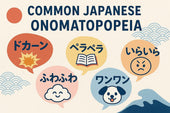
Common Japanese Onomatopoeia: Essential Words You’ll Hear Everywhere
If you spend any time in Japan, you’ll hear onomatopoeia everywhere: on TV, in everyday conversations, in manga, and ...
-
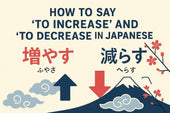
How to Say “To Increase” and “To Decrease” in Japanese: With Examples
You've noticed there are multiple ways to say “to increase” or "to decrease" in Japanese. Between transitive and intr...
-

How to Say "Police Officer" in Japanese: Common Terms and Slang
There are several ways to say "police officer" in Japanese, and each one has a different level of formality and usage...
-
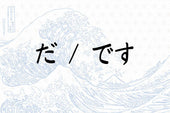
Understanding だ (da) and です (desu) in Japanese: Meaning and Usage
When learning Japanese, one of the first things you’ll come across is だ (da) and です (desu). These words don’t have a ...
-
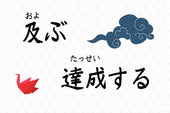
Difference Between 及ぶ (およぶ) and 達成する (たっせいする)
Both 及ぶ and 達成する can relate to "reaching" or "achieving" something, but they have distinct nuances and usage contexts...
-

JLPT N5 Study Guide: A Beginner's Roadmap to Acing the Test
If you’ve just started learning Japanese and are aiming to ace the JLPT N5, you’ll need a solid study guide to help y...
-

JLPT N5 Vocabulary List - All 748 Words You Need to Know
Vocabulary is the foundation of any language, and Japanese is no exception. The more you know, the better. Over time ...
-
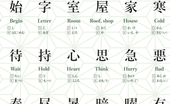
JLPT N4 Kanij List - All 176 Characters You Need To Know
After mastering the JLPT N5 kanji, you're ready to take your Japanese kanji game to the next level. JLPT N4. Let's go...
-
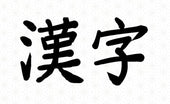
Kanji For Kanji - 漢字
Inception time. Which kanji compose the kanji of "kanji"? The kanji for "kanji" is actually pretty straightforward. I...
-

How to Memorize Katakana Easily: 9 Tips for Beginners
For those diving into Japanese, mastering hiragana and katakana is the first significant challenge. While hiragana o...
-
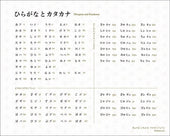
Complete Hiragana and Katakana Chart With All 112 Characters
The very first step for everybody who wants to learn Japanese is to study the hiragana and katakana chart (before lea...
-
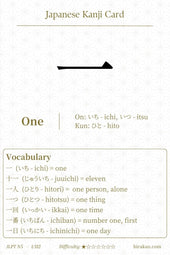
JLPT N5 Kanji: Kanji For One 一 (ichi)
Probably one the most simple kanji to remember, the kanji for 'one' is simply written '一'. Let's see its readings and...
-
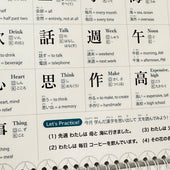
How Long Does It Take to Learn Kanji? A Beginner's Guide
Ask any Japanese student what's the scariest part of learning the language, and they'll say kanji. And they're righ...
-
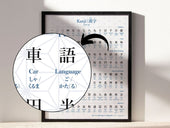
Is it Necessary to Learn Kanji? The Last Answer You'll Ever Need
Many beginners in Japanese wonder whether they should really learn kanji. I know this, because I also wondered when s...
-

How Long Does it Take to Learn Hiragana and Katakana?
As a beginner in Japanese, your first step is diving into the alphabets of Hiragana and Katakana. These are the build...
-

13 Best YouTube Channels to Learn Japanese, From Beginner to Intermediate
YouTube can be an incredible resource for learning Japanese. And best of all, it's free. So we've compiled a list of ...
-
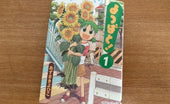
Top 10 Manga for Japanese Language Learners: From Beginners to Intermediates!
If you're learning Japanese, chances are you're interested in manga. So instead of reading texts about Tanaka-san s...
-
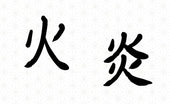
Kanji for 'Fire' in Japanese: 火 or 炎?
Welcome to our enlightening exploration of Japanese kanji! Today, we're igniting our understanding of a primal force ...
-
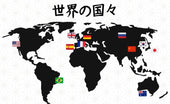
The Complete Guide to Country Names in Japanese: Say and Pronounce Them Right!
Whether you're planning a trip, learning Japanese, or just curious about how different countries are represented in a...
-
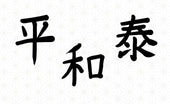
Kanji for Peace: 平, 和, 泰 - The Symbols of Harmony
You might be wondering what are the Japanese symbols for 'Peace'. In this article, we're diving deep into this univer...
-
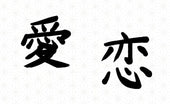
Kanji for 'Love': How and When to Use 愛 and 恋
Welcome to our journey into the world of Japanese kanji! Today, we're delving into one of the most heartwarming and p...
-
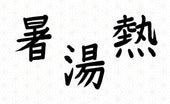
Kanji for 'Hot' in Japanese: 暑, 湯, and 熱 - A Comprehensive Guide
Welcome to our journey into the world of Japanese kanji! Today, we're going to delve into an exciting and essential c...
-
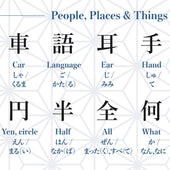
JLPT N5 Kanji List - All 112 Characters You Need To Know
Below we've listed all 112 JLPT N5 level kanji along with their English meaning, readings, and two accompanying vocab...
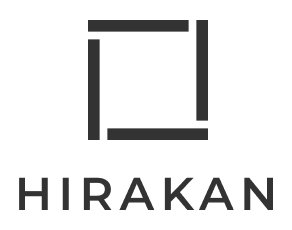
![この・その・あの・どの – Using ‘This / That / Which’ with Nouns in Japanese [JLPT N5]](http://hirakan.com/cdn/shop/articles/acd351ada3fe4b04ae86de788a3350b8.jpg?v=1766305268&width=170)
![これ・それ・あれ・どれ – Saying ‘This / That / Which One’ in Japanese [JLPT N5]](http://hirakan.com/cdn/shop/articles/this-that.jpg?v=1766305107&width=170)
![か~か – Expressing Choices like “A or B” in Japanese [JLPT N5]](http://hirakan.com/cdn/shop/articles/choices.jpg?v=1766304827&width=170)
![~から~まで – Saying “From A to B” in Japanese [JLPT N5]](http://hirakan.com/cdn/shop/articles/from-AtoB.jpg?v=1765093560&width=170)
![まで – Expressing “Until” and “Up To” in Japanese [JLPT N5]](http://hirakan.com/cdn/shop/articles/until-up-to.jpg?v=1765093405&width=170)
![から – Expressing “Because” and “From/Since” in Japanese [JLPT N5]](http://hirakan.com/cdn/shop/articles/because-from_since.jpg?v=1765093285&width=170)
![や – Listing Examples with “And, Among Others” in Japanese [JLPT N5]](http://hirakan.com/cdn/shop/articles/and.jpg?v=1765093138&width=170)
![か – Forming Questions and Saying “Or” in Japanese [JLPT N5]](http://hirakan.com/cdn/shop/articles/ka-questions.jpg?v=1763787134&width=170)
![も – Saying “Also” and “Too” in Japanese [JLPT N5]](http://hirakan.com/cdn/shop/articles/mo-also-too_99f908e6-78d0-4f82-8319-391ef42764bc.jpg?v=1763787251&width=170)
![と – Linking 'And', 'With', and Quotations in Japanese [JLPT N5]](http://hirakan.com/cdn/shop/articles/to-and-with-quotation.jpg?v=1763265110&width=170)
![で – Marking Where and How an Action Happens in Japanese [JLPT N5]](http://hirakan.com/cdn/shop/articles/de-where-how-action-happens.jpg?v=1763264973&width=170)
![へ – Marking Direction ‘Toward’ in Japanese [JLPT N5]](http://hirakan.com/cdn/shop/articles/he-marking-direction.jpg?v=1762667986&width=170)
![に – Marking Time, Destinations, and Recipients in Japanese [JLPT N5]](http://hirakan.com/cdn/shop/articles/ni-marking-destination.jpg?v=1762667846&width=170)
![の – Possession and Noun Linking in Japanese [JLPT N5]](http://hirakan.com/cdn/shop/articles/no-possession-and-noun-linking.jpg?v=1761961297&width=170)
![を – Marking the Direct Object in Japanese [JLPT N5]](http://hirakan.com/cdn/shop/articles/o-direct-object.jpg?v=1761960990&width=170)
![が – Marking the Subject ('Who/What') in Japanese [JLPT N5]](http://hirakan.com/cdn/shop/articles/ga-subject-marker_60f30f70-6ca5-47ee-9a00-3646195d7d3c.jpg?v=1761386355&width=170)
![は (wa) – Topic Marker and Contrast in Japanese [JLPT N5]](http://hirakan.com/cdn/shop/articles/wa-topic-marker.jpg?v=1761385996&width=170)
![じゃない・ではありません – Expressing 'Is/Was Not' in Japanese [JLPT N5]](http://hirakan.com/cdn/shop/articles/janai-dehaarimasen_2594963b-531e-4f4d-a9b0-361010e0a720.jpg?v=1760865884&width=170)
![だ・です/だった・でした – Saying ‘to be’ in Japanese [JLPT N5]](http://hirakan.com/cdn/shop/articles/da-desu-datta-deshita_58bbc732-53fd-48da-83c7-4e477e7cc0b2.jpg?v=1760864506&width=170)






















